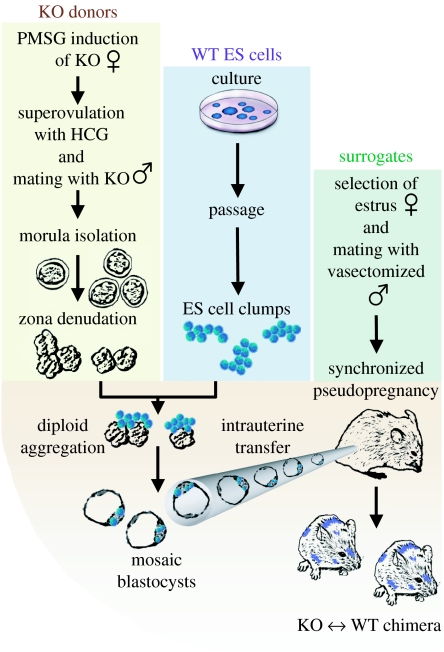Figure 1.
Morula-stage embryos re-engineered through diploid aggregation. Flowchart of chimeric offspring derivation from random incorporation of embryonic stem cells into early stage embryos achieved through imposed diploid aggregation. Yellow box: Initial embryos are generated from timed pregnant KCNJ11 gene-deficient donors previously superovulated through hormonal activation using sequential i.p. injections of PMSG and HCG. Knockout embryos are harvested at 2.5 d.p.c. to collect at the morula stage. Zona pellucida is removed using acid Tyrode's solution to prepare aggregation competent early embryos. Blue box: Simultaneously, embryonic stem cells are grown for two passages to produce low-density cultures that when digested are able to generate clumps of 8–15 pluripotent stem cells. Green box: Synchronized pseudopregnant surrogates are produced by appropriate selection of females in oestrus, and mated with vasectomized studs. Bottom: Mosaic morula generated after aggregation of KNCJ11 gene-deficient embryos with wild-type embryonic stem cells. Following intrauterine surgical transfer, surrogate females support normal embryonic development and give birth to chimeric offspring.

